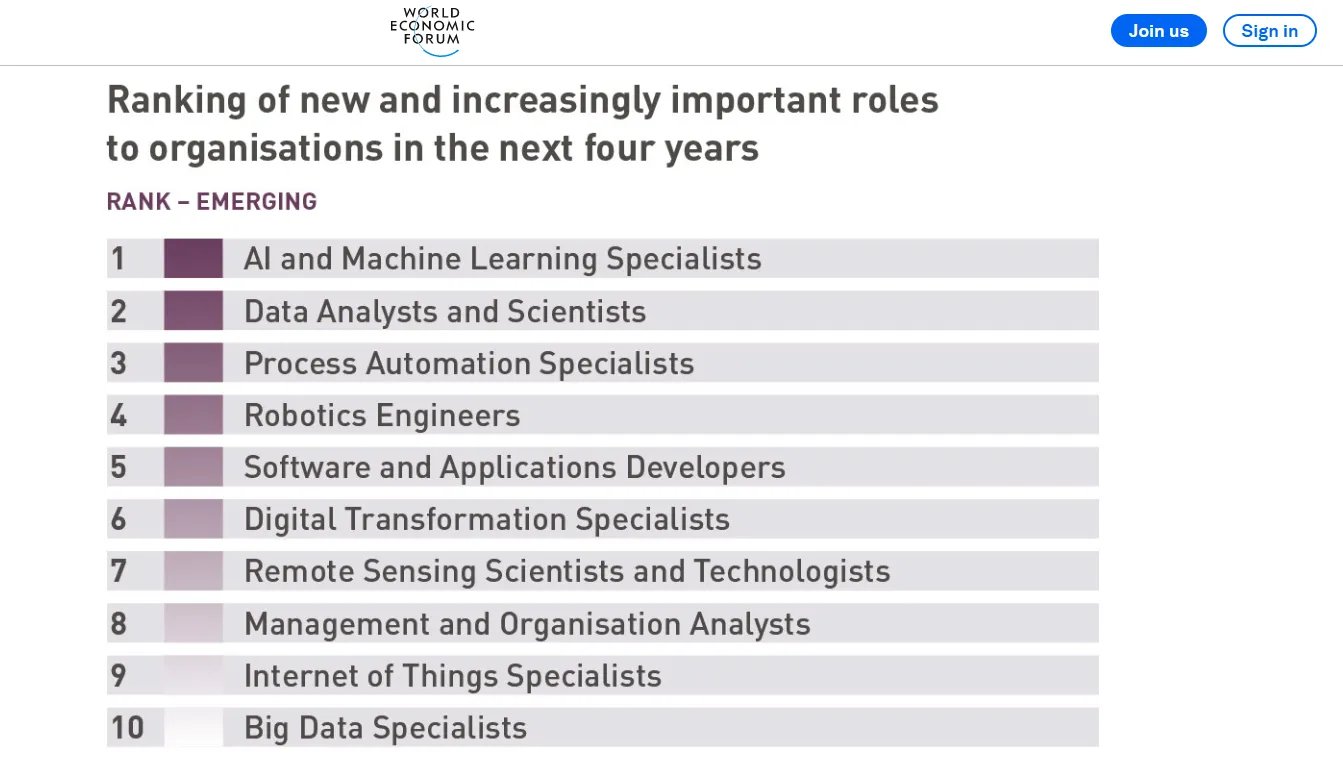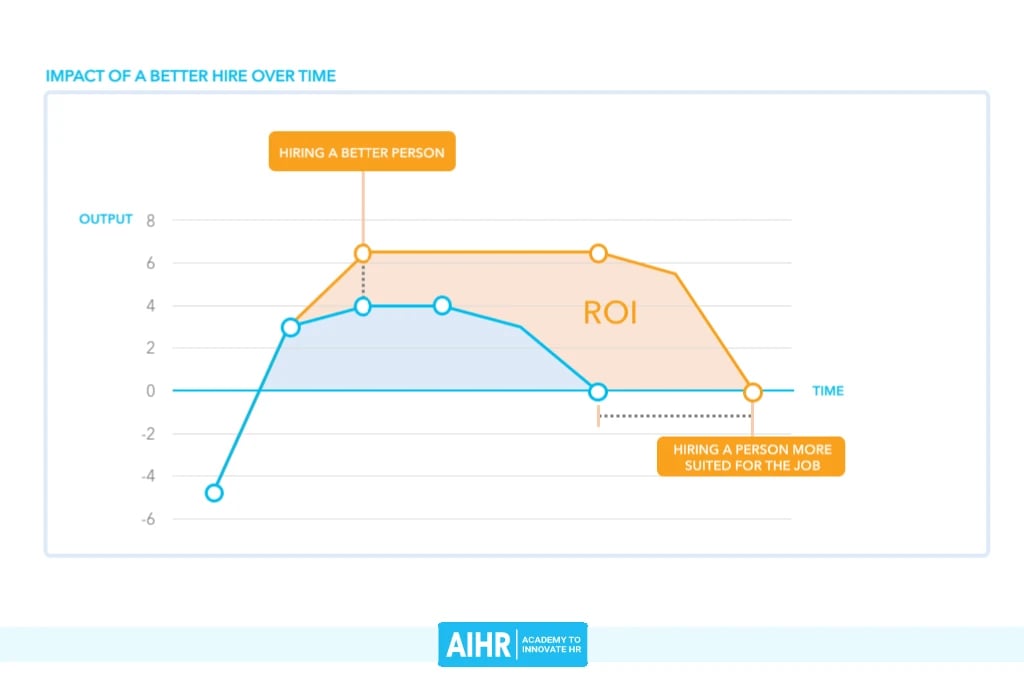New Year, New hire?
Although the new year has just begun, the persistent shortage of IT professionals that plagued the industry throughout 2024 hasn't gone away.
So, you're in a situation where it's tough to get a head count, and you urgently need skilled candidates.
The current economic situation is uncertain owing to the overnight shift to remote work, rising prices, a tight job market, and the potential for a recession. And above that, the IT sector is rapidly changing from web 1.0, giving way to web 2.0 and now web 3.0. Web 3.0 is all about the next generation of the web. It has brought with it Semantic Web, AI, Decentralization, Ubiquity, Blockchains, and many other things.
This transition has significantly affected many companies, resulting in created new IT roles. And firms are now constantly searching for top talents to fill open IT positions. 
(source)
Now the point is, are there enough IT professionals in the market to fill these job posts? If so, what are the best ways to recruit IT professionals?
Don't worry! We have compiled a list of 10 recruitment strategies to help you gain insight into the future of IT and how you can effectively recruit IT professionals for your company. Use these strategies to be well-prepared for the future.
Best Ways for Recruiting IT Professionals
1. Understand the exact requirement
The primary goal is to understand the exact requirement of the job. Poor comprehension of the discrepancy between the desired and available IT talent is a common reason recruiters struggle to attract qualified professionals.
According to an article by the World Economic Forum1, the average employee's skill set is projected to shift by 40% over the next four years.
Thus, to attract the best fit for your position, it is essential to have a thorough understanding of the job requirements. For example, if you need to hire an IT professional, you will likely receive a range of applications from experienced data science professionals to recent computer science graduates.
A clear understanding of the required skills and experience for the job will help you quickly identify unqualified applicants, allowing you to focus your efforts on those best suited for the role.
In essence, the more you know about the root of the problem, the more successful your tech recruitment strategy will be.
2. Create an Attractive Job Description
Once you have determined the necessary qualifications for the position you are looking to fill, craft a job description that clearly outlines the roles and responsibilities of the role.
But why do you need a compelling job description when you can simply jot down roles and responsibilities and get a massive influx of resumes?
Well, think about it. You created a job description and received a huge response, but not even a single candidate seemed fit for the role. Now that's a total waste of time as well as resources.
So, rewrite the job description, reconsider the exact skills you require, and develop a thorough candidate persona. When crafting your candidate persona, consider their duties and required skill set.
Here are a few tips you can consider while creating a captivating job description:
- Write an accurate title to pique the interest of the most qualified job seekers.
- Provide a summary that gets job searchers interested in the role and organization.
- Create a list of core responsibilities as well as the requisite hard and soft abilities.
- Explain the day-to-day tasks and how the role fits into the company.
- Highlight your values and your people.
3. Use unique sourcing platforms which are used by IT talents
Now the next step! Of course, you are well aware of this step. You've been doing it all these years. Creating a thorough job description and posting it on numerous job search and recruitment platforms
But. But!!
Sourcing suitable applicants is challenging, and it becomes even more difficult when looking for niche IT roles. It requires recruiters to go through various job boards, online resume databases, or social media. Thus, in order to make your candidate sourcing process seamless, you can leverage various sourcing tools. So here are all the top 12 sourcing tools you need to know.
These tools enable you to do the following tasks:
- Find candidates based on current and past job roles.
- Outline the key responsibilities, skills, and experience required for the job.
- Narrow down candidates based on particular technologies.
- Gather data about candidates, such as their email addresses and phone numbers.
- Let you narrow down your search by location.
4. Evaluate IT Skills before you invite candidates for next round
So, now that you've reached this point in the hiring process, you must have shortlisted a few potential individuals based on their prior job experience and resumes. The next step is to assess their IT skills.
This step of the hiring process is the one of the best ways to recruit IT professionals. Schedule a technical round of interviews with the most knowledgeable individual in your business who possesses the same or a higher degree of competence.
However, many businesses without in-house IT experts can find it challenging to assess the technical proficiency of prospective employees.
What to do now?
Borrow help!
Several online skills assessment tools available can show you where candidates are strong and weak, as well as how they compare to candidates that take the assessments. iMocha is one such tool.
iMocha is an online skill assessment tool that helps you test candidates' technical and interpersonal abilities, allowing you to streamline your recruiting process. This comprehensive pre-employment skills assessment includes over 3000+ skills, innovative coding simulators, and AI-Logicbox. Recruiters can use these assessments to discover each candidate's capabilities and develop winning teams.
Moreover, you can analyze technical and soft skills in one go using automated video interview capabilities and one-way video interview questions. Using this tool, you'll be able to replace traditional pass/fail grading categories with your own performance metric.
In other words, it enables recruiters and hiring managers to quickly assess the quality of prospects, identify possible bottlenecks, and dramatically improve their chances of recruiting IT professionals for their organizations. Furthermore, this platform has extensive reporting features, which provide a well-organized and easy-to-read overview of a candidate's evaluation result.
|
Did you know that iMocha can help you reduce your hiring time from 17 days to 7 days per role? Speak to iMocha Experts! |
5. Build a Network of IT professionals
Having a strong network is one of the best ways to recruit IT professionals.
Why?
Simply put, no matter how well-crafted your job description may be, you won't get any suitable applicants if you don't reach potential candidates.
Thus, having a strong network provides a pool of talent to choose from. It also allows companies to gain input on possible applicants from their peers, which can bring vital insight into how well a candidate could meet their needs.
Additionally, networking with IT professionals can provide a fast route to finding the right candidates for your open roles, as well as help build meaningful relationships with potential candidates who may not be actively searching for work. According to LinkedIn2, over 70% of qualified applicants are passive job seekers, meaning they are open to new opportunities even though they aren't actively seeking them out.
Ultimately, having a strong network of IT specialists can significantly improve the efficiency and effectiveness of the recruiting process for hiring IT professionals.
6. Create interview questions to dig deeper into candidates' experience
Once you have narrowed down your list of potential hires, use the interview process to gain further insight into their experience. Pose questions that focus on balancing technical and business roles they have undertaken in previous positions.
Ask detailed questions that will give you an accurate picture of the candidate's experience. By asking specific interview questions, you can better understand an individual's experience, qualifications, and suitability for the job.
In addition to conducting a background check, reach out to the applicant's former supervisors to ask them questions about their experience with the applicant.
By carefully assessing a candidate's qualifications and experience through detailed questioning, you'll be able to make more informed decisions when it comes to hiring.
|
Struggling with higher technical screening time and low-quality candidates? Discover how iMocha can reduce technical screening time by 80%. |
7. Make sure you are adding a few interview rounds
Many businesses have an odd tendency to make the recruitment process as lengthy as possible. Unfortunately, such lengthy practices are not beneficial to businesses.
Many candidates become overwhelmed by feelings of confusion, disappointment, and helplessness during the recruitment process, causing them to leave the process entirely.
According to a LinkedIn survey3, there has been a 20% surge in job seekers dropping out of the hiring process in the last year. This is indicative of the current talent market, where candidates are able to be more selective and easily change direction.
In a recent Forbes article4, one of its members states that recruiters should keep the hiring cycle short. Most highly qualified people to get several job offers, and the most significant deterrent is a two-week recruiting procedure. Keep it simple—four interviews at most—and offer candidates a clear yes or no answer following the interviews.
8. Create a Brand that attracts IT talent
Another one of the best ways to recruit IT professionals is by creating awareness of your company's brand.
But how would developing a brand for your organization help you recruit top IT professionals?
Developing a brand that attracts IT talent during recruitment is critical because it provides an extra channel for accessing the best IT talent available. It also enables firms to distinguish themselves from their competition by communicating a distinct and appealing message to prospective employees.
Additionally, a strong brand can increase the likelihood of top talent remembering your organization and connecting to it when considering potential employers.
9. Track and measure IT recruitment efforts
Any data-driven hiring plan must include recruiting metrics.
Making the appropriate recruiting decisions is critical for a recruiter. Each hiring must provide value to your business and increase ROI. By examining the employee lifetime value of each hire, recruiting metrics can help you quantify the performance of those hiring decisions.
Having the appropriate person in the appropriate job is essential to maximize return on investment (ROI). That is why tracking recruiting metrics is essential to ensure you are sourcing and hiring the ideal candidates.
See the diagram below to understand the importance of having the right person for the job.
 Source - AIHR recruiting metrics
Source - AIHR recruiting metrics
In order to effectively monitor IT recruitment performance and identify any potential issues, it is essential to create regular reports that detail the recruitment process. These reports should include the number of resumes processed, job interviews conducted, offers accepted/declined, time spent on evaluating each applicant, and any other pertinent data.
Once these reports are generated, hiring managers and recruiters should work together to analyze the information and devise strategies for optimizing the IT recruitment process.
|
Want to ensure that your hiring team is leveraging the right data? Check out how iMocha Analytics measures and tracks the metrics you need to hire efficiently. |
10. Create attractive referral programs to get quality talent
Creating an appealing referral program can assist in attracting top talent by providing a significant incentive for both the referrer and the referred prospect.
It enables your employees to earn rewards or other incentives for referring developers to your organization.
As a rule, employee referrals tend to yield higher quality candidates since employees feel a personal responsibility for their recommendations. Additionally, these candidates are more likely to convert as they already hold a degree of trust in the company.
Conclusion
Overall, one of the significant challenges that firms encounter in their quest to develop an efficient employee network is attracting and recruiting IT professionals. In order to obtain the best outcomes, it is critical to have a recruiting strategy that considers all the phases involved in hiring qualified IT workers. The methods listed above are some of the best ways to recruit IT professionals that you can leverage to ensure a hassle-free recruitment process.
FAQs
How do recruiters recruit IT professionals?
In order to recruit IT professionals' recruiters, use a variety of methods, this includes:
- Constructing job descriptions
- Job postings on job boards
- Networking through industry contacts
- Attending job fairs
- Utilizing social media to reach out to potential job candidates.
- Sourcing qualified candidates that are suitable for the open position using recruitment tools
What should an IT recruiter know?
As an IT recruiter, you must thoroughly understand the job position and its responsibilities within the organization. It allows you to assess applicants' capabilities and ensure they have the required skills to meet customer requirements in an IT role. Furthermore, you must be aware of the recruitment channels that work in your organization's best interests by assisting you in shortlisting the top IT employees.
What is the process of IT recruitment?
IT recruitment process incorporates the following steps:
- Identify the need for IT professionals
- Develop a Job Description
- Find or attract top candidates
- Screen Resumes
- Assess skills
- Interview Candidates
- onduct reference checks
Reference
¹ Survey (2021) 7 insights to help the mining industry prepare its workforce for the future
https://www.weforum.org/agenda/2021/05/7-insights-mining-industry-prepare-workforce-future/
2 LinkedIn Hiring Statistics
3 Forbes Councils Member (2021) 16 Strategies for Finding and Recruiting the Best Tech Talent
4 Samantha McLaren (2019) 10 Reasons Candidates Drop Out of Your Hiring Process — and What You Can Do

